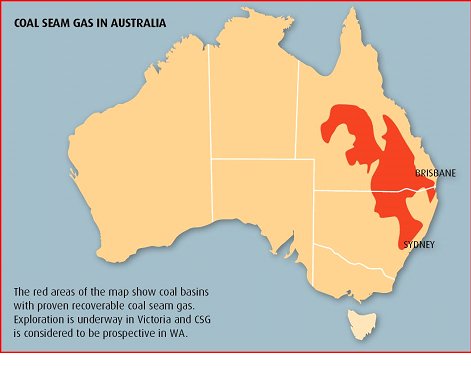
Cross-posted from The Conversation.
New South Wales has introduced new rules for coal seam gas, meaning the state now has some of the strongest regulation in the country. The rules set aside 2.8 million hectares of important agricultural land – including vineyards and equine properties – that must be rigorously investigated before coal seam gas (CSG) projects can proceed.
But with CSG a source of major conflict between land-holders and the gas industry, are the new rules fair? And how do they stack up with other states?
How do the new rules work?
Under the new rules, 2.8 million hectares of prime agricultural land will be classed as “bio-physical, strategic, agricultural land”. The land will cover large areas of the Upper Hunter and New England North West regions of NSW, both centres of CSG development.
Rather than exempt CSG altogether, any CSG project on this land will have to be assessed through a vigorous new “gateway” process which has been described as one of the toughest in the country.
CSG projects will be assessed by a panel of six state-appointed groundwater, agricultural and mining experts, in three separate stages.
First the panel must assess whether a CSG project will reduce agricultural productivity through disturbance and subsidence, impacts on the soil profile, fertility and rooting depths, soil salinity, changes to soil PH, and impacts on highly productive groundwater.
Next, the panel must consider impacts on the “critical industry clusters”. These are regions of highly productive industries that contribute to the employment, identity and character of the area. These industries have been held to include more than 800 vineyards and equine properties.
Finally, the gateway panel must evaluate any advice it receives from the newly established Commonwealth Independent Expert Scientific Commission on CSG and Large Coal Mining Development.
Under the gateway process, any new CSG activity is prohibited within two kilometres of existing residential zones. This is an amendment of the state planning policy, following widespread community concerns.
The prohibition includes land which is identified as a future residential growth area. Residential exclusion zones in New South Wales cover an estimated 2.344 million hectares across all 152 local government areas of the state.
How do they compare?
The regulatory framework for CSG projects (and other unconventional gas projects) in Queensland and Victoria is not as rigorous as New South Wales.
In Queensland, where the CSG industry has been operational for some time, there is no specialised assessment process, although standard environmental assessment processes have been improved.
The Queensland government has, however, announced that no new land will be released for coal seam gas exploration within restricted urban areas. This means that new coal seam gas exploration tenures will not be granted in areas designated as restricted.
Existing exploration tenure holders will also be requested to relinquish areas included within their tenures which are in or around urban areas.
Restricted areas include all towns in South East Queensland plus a buffer zone of two kilometres and all Queensland towns with a population of 1000 or more.
In Victoria, the regulatory framework for CSG is underdeveloped. There is no framework for either exempting strategic agricultural land, or for a more rigorous and independent assessment process such as the gateway process in NSW. With the release of unconventional gas licences in the Otway and Gippsland regions, legislative reform is becoming increasingly important.
It’s worth noting that at the end of the day, state regulation remains subject to the federal EPBC Act. As of 2013 the act specifically includes impacts from CSG mining on water, and all projects impacting water will need to be referred to the federal minister.
The New South Wales gateway process has emerged as a structured and highly developed regime for the independent assessment of CSG expansion into areas of agricultural significance. The energy sector may be concerned about the impact the new regulatory process will have upon the gas industry, but balancing land and industry is crucial for the future of CSG.

